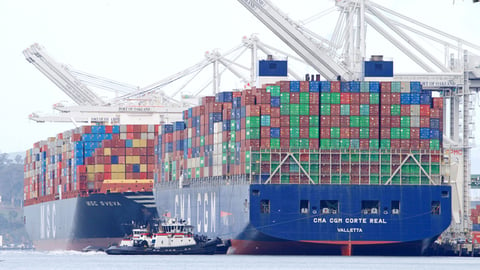Tariffs Cloud Retail Outlook, NRF Says
With the back-to-school selling season and the all-important fourth quarter in the not-too-distant future, the chief economist for the National Retail Federation said predicting the impact of tariffs and new government policies on consumer spending is difficult to forecast.
Jack Kleinhenz, chief economist with the NRF, said anxiety and confusion have taken "center stage" in the economy and financial markets as uncertainty over public policy has intensified.
"Economic fundamentals appear solid at this juncture, but uncertainty is pervasive," he said. "There are many crosscurrents surrounding tariffs, immigration, and deregulation, and everyone is sorting through what the tariff rates are going to be, how they will affect inflation for retail products and, importantly, how long they will be in place."
Kleinhenz’s comments came in the July edition of the NRF’s Monthly Economic Review, where he said "economic growth is holding up relatively well" through the year’s first half despite uncertainty about the future.
Gross domestic product fell at an annual rate of 0.5% in the first quarter, but that was mostly because of a surge in imports driven by tariff announcements. In contrast, private final sales to domestic purchasers, a measure of consumer and business spending, were up 1.9% year-over-year. That was down from 2.9% in the previous quarter but showed continued strength in private sector demand, and "the slowdown has been less than feared."
Year-over-year inflation as measured by the Personal Consumption Expenditures Price Index was up to 2.3% in May from 2.1% in April. Unadjusted for inflation, personal income and consumer spending were both up 4.5% in May. Core retail sales, as defined by NRF and based on Census Bureau data but excluding automobile dealers, gasoline stations, and restaurants, were up 3.9% year-over-year in May and for the first five months of the year.
The labor market is performing better than expected, with employers adding 147,000 jobs in June, just above the monthly average of 146,000 over the past year, and the unemployment rate was largely steady at 4.1%. Job openings rebounded to 7.8 million in June, "indicating continued demand for workers" and exceeding the 7 million people unemployed.
Tariffs remain the unknown, and their impact has yet to be clearly seen in product prices.
"If the large increases in tariffs announced earlier this year take effect and are sustained, they will infiltrate consumer prices, causing a downshift in spending that is likely to spill over into the labor market later in the year with higher unemployment," Kleinhenz said.




